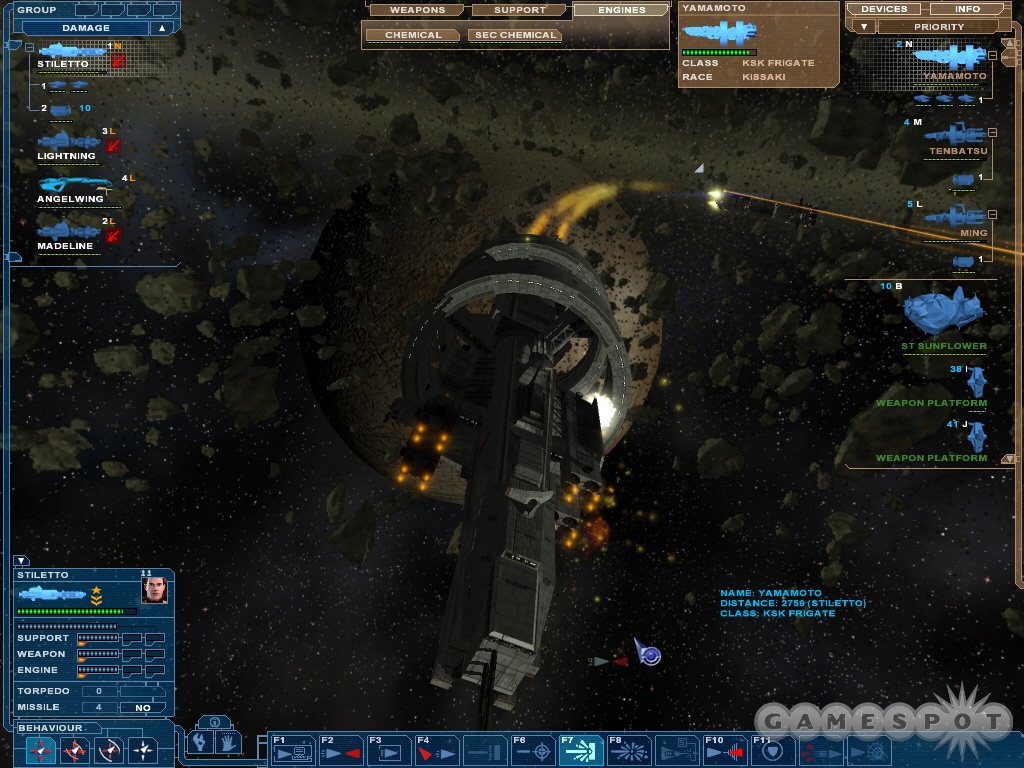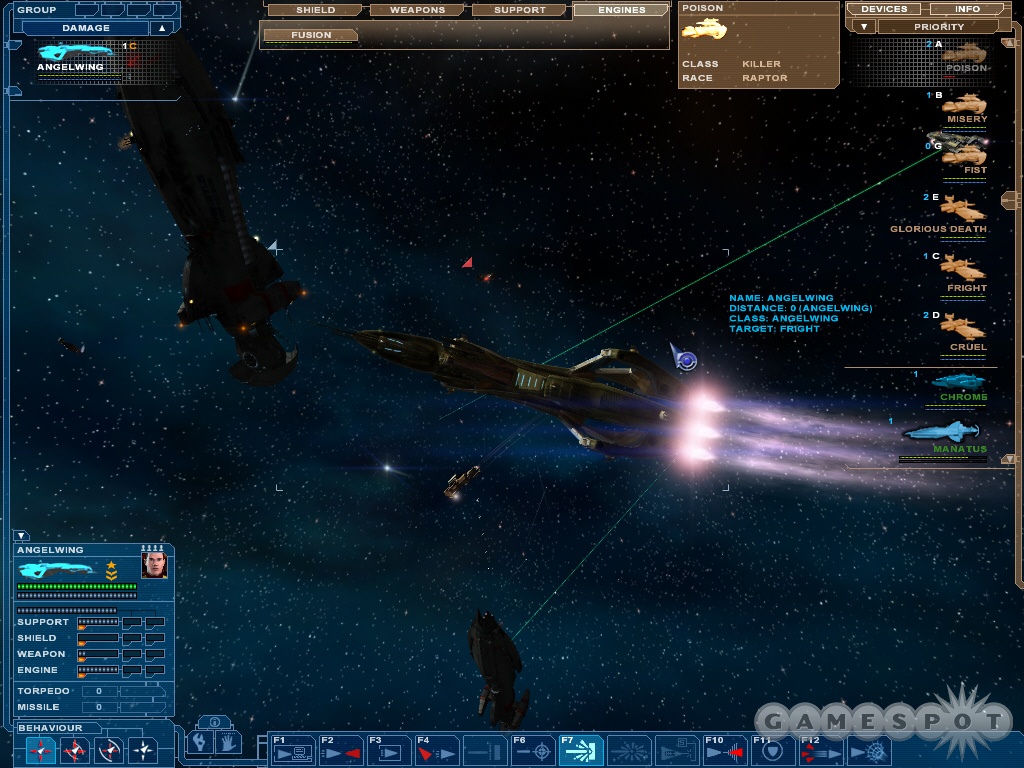Nexus: The Jupiter Incident Hands-On
We give this starship combat game a shakedown cruise and come away impressed.
Nexus: The Jupiter Incident was one of the games that caught our eye at this year's E3, but it was looking for a publisher back then, so its future was in doubt. However, that changed recently when Vivendi Universal Games picked up the game. Now this beautiful, European-developed space fleet sim, previously known as Galaxy Andromeda, is heading to America next year, and we got our hands on an early version of the game to check it out.

Nexus envisions a future where giant corporations have replaced nation-states and humanity has colonized the solar system. These corporations have built large fleets of space vessels--both warships and freighters--and they compete against each other for resources around the outer planets. You'll play as Marcus Cromwell, who is employed by Spacetech (one of the larger corporations) as commanding officer of the corvette Stiletto. Dispatched on a long-term mission to Jupiter, you're eight months out from Earth when you discover strange events occurring in the asteroid belts. From that point, you'll be plunged into an intriguing story involving aliens, artificial intelligence, and a lost colony of man.
Your primary role in the game will be to control whichever vessel or fleets of vessels that are under Cromwell's command. You can control up to 10 battleships at a time, plus their assorted fighter squadrons and shuttles. It's important to note that Nexus is less of a real-time strategy game and more of a starship combat and fleet sim. This means that in addition to giving commands to your ships, you can tweak their power settings and monitor their various systems. There's no resource gathering or unit building in the game; rather, you must use tactics and manage your systems carefully in order to overcome the enemy. There will be crews and officers on your ships to aid you, and they will gain experience and improve their skills over time.
You can issue commands and orders using a simple point-and-click interface. For instance, if you wish to disable the engines on an enemy vessel, all you have to do is left-click on the order at the bottom of the screen, right-click on the target vessel, and then select which component you wish to disable. Or you can order your ship to maintain standoff range and fire long-range weapons at the target. This is especially pleasing, as you can watch a tiny missile launch from your ship and explode in a blindingly huge flash of light--it's a visual effect that's straight out of the movies and television.
The battles that we've played so far all have a very strong cinematic feel to them. Nexus is powered by developer Mithis' Black Sun graphics engine, which uses the latest DirectX 9 graphical features, making it probably one of the best-looking space games to date. (The game will also support DirectX 8 graphical features if you lack a DirectX 9-compliant graphics card.) The amount of detail is impressive: You can see individual thrusters fire as huge capital ships and nimble fighters twist around in space, and the lighting and shadowing effects are excellent. The camera is very easy to control, and you can zoom in to inspect the large amount of detail on your ships or zoom out to see the grand scale of the battle. The game features a detailed star map as well as planetary movement based on real physics.
In between missions, you'll have the opportunity to customize and outfit your ship with the best equipment available--provided that you have enough resource points to purchase them. This way, you can upgrade your weapons, power generators, sensors, engines, and more, all of which have an effect on your ship's capabilities in battle. For example, better electronic countermeasures will make your ship harder to hit, while upgraded flak guns will help to shoot down incoming fighters and missiles. The game also takes many concepts from modern-day naval warfare and transposes them into space. For instance, sensors play a role in the game, and there will be stealth-style missions where you'll have to minimize your ship's energy signature to avoid detection.

We didn't get a chance to test out Nexus' multiplayer component, but it will allow you to play as both the humans and the alien races in the game. Nexus will also ship with built-in voice support, allowing you to chat with your fellow players, assuming you have a microphone. The game itself will ship with more than 30 missions, 50 unique characters, six different alien species (all with unique ships and race-specific tactics), more than 100 planets in 20 solar systems, and more.
At this point, we're very impressed by Nexus. No one has made a game like this for quite some time; space games used to be a pillar of PC gaming but have declined in popularity over the past decade. Judging from our time with Nexus, it's safe to say that space fans, as well as science fiction fans, can look forward to this game. Nexus: The Jupiter Incident will ship early next year.
Got a news tip or want to contact us directly? Email news@gamespot.com
Join the conversation